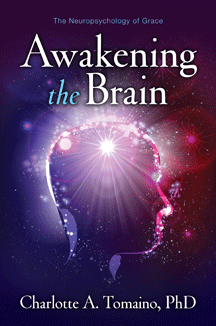Spirit, Mind, & Body Resources for Making Neurochoices
The Creation and Maintenance of Wellness by Dr. Charlotte A. Tomaino
Aging
The Brain's Garden: A Way to Cultivate Healthy Behaviors
The ever-changing nature of the brain easily lends itself to a gar- den theme. As you take the concepts of this chapter and apply them to your own life, think of the sprouting, fertilizing, and pruning going on within your neural network. These concepts show us not only the inside picture of how healthy brains change, but also how the brain physically heals and adapts after an injury to restore lost cognitive, behavioral, and social functioning. This is also true of developing brains. Barbara's story showed that a child's brain can be engaged in precise tasks that entrain neuronal structures and produce stronger ability. The same is true for adults seeking new skills. At age sixty five, I had to learn to connect my thoughts to my fingers and then master word processing in order to write this book. It took repeated effort over time, but now I am not limited to paper and pen, and my fingers know their way around the keyboard as thoughts come in their direction. Essentially, I am observing that the notions of what aging looked like when I was growing up has vastly changed for the better. The brain is "use it or lose it," and now we know the mechanisms that keep the system humming over time.
These activities spark the growth of new neurons, a process known as sprouting. In graduate school I was taught the brain cannot grow new cells. Not true! The process called neurogenesis enables the brain to keep changing throughout life by producing new cells, or individual neurons. As new neurons grow, they engage with the existing neural organization of the brain, further expanding the present neural networks. We now know there are specific triggers which turn on the brain's capacity for growth and development. Sprouting is triggered by the fertilizer of brain- derived neurotrophic factor (BDNF), which is a kind of chemistry activated by physical exercise. When you are feeling those little aches and pains after exercising, it means that you have actually activated an inflammatory process that activates the chemical for new cell growth. The expansion of interest in exercise, such as working with a trainer and participating in community athletic events like walks or runs or swims, all contribute to the growth of new neurons in your brain.
©Tomaino, Charlotte (2012). Awakening the Brain.
New York:Simon & Schuster.

